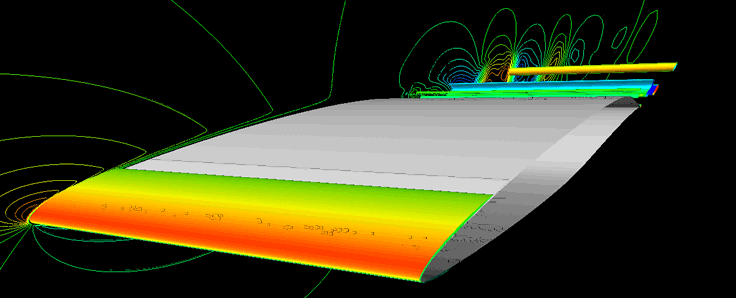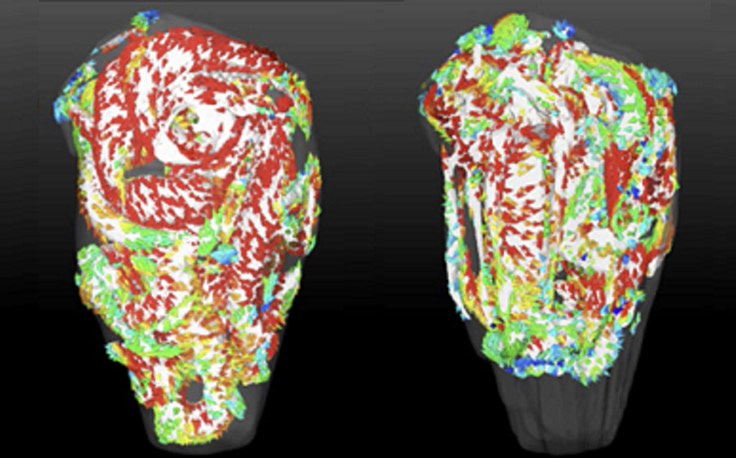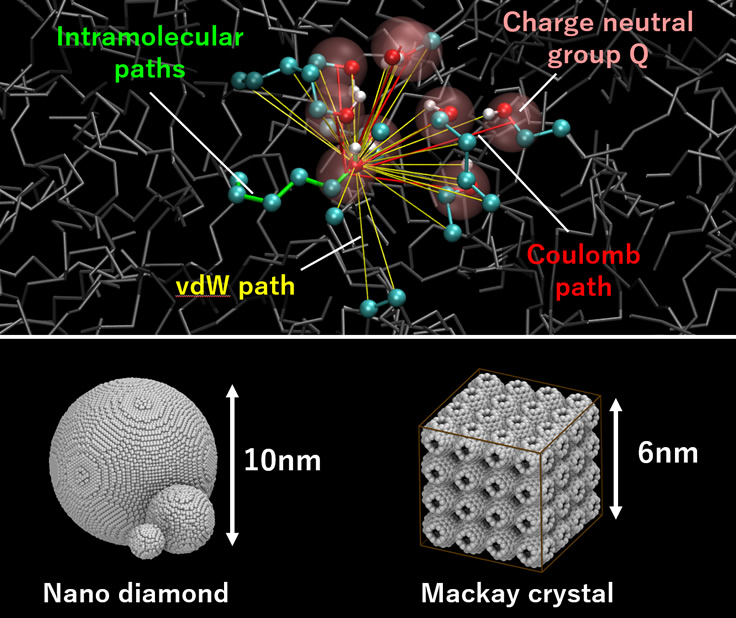Research Topics
Representative Research Examples
-

Laminar-turbulence transition phenomena near the leading edge of a swept wing
When a commercial aircraft operates, about half of the total energy loss is due to the friction due to the viscosity of the air. Turbulent flow makes the friction increase, but 10% of the total energy loss can be reduced if the laminar flow can be maintained 50% on the wing. Recent advances in numerical simulation technology and surface processing technology have made it possible to expect higher performance than ever before, therefore it has been attracting attention in recent years. It is known that the main wing of a passenger aircraft has a swept angle to reduce the effect of shock waves, which complicates the flow and causes a unique laminar-turbulent transition phenomenon. By carrying out direct numerical simulation by large-scale parallelization, we aim to clarify the details of the transition mechanism on the swept surface, improve the accuracy of the transition prediction strategy, and propose a new laminarization technology.
-

Blood flow analysis in a left ventricle
The thrombus formation has been assumed not to occur in a left ventricle, which works as a pump sending a blood to a circulatory system, because of its high blood flow velocity. However, resent studies indicated the thrombus formation might occur in the left ventricle.
This study investigates the blood flow in the left ventricle using the left ventricle model considering representative internal structures in the left ventricle with the supercomputer in Institute of Fluid Science. Figures are the visualization of vortex structures in the left ventricle models without (left) and with (right) the internal structures. The white surface shows shapes of the vortex. The vortex structures do not reach an apex of the left ventricle in the case where internal structures exist. Various parameters besides the vortex structure also show that the tendency blood flow stagnates becomes high by the internal structures. Moreover, the study on the effect of valvular heart diseases has been proceeded using this analysis technique. -

Reproduced with permission by Elsevier from Fluid Phase Equilibria, 441, p.24 (2017)
Elucidation and Control of the molecular mechanism that determines thermal conductivity of heat medium
Modern industrial products, typified by electronic devices, are required to be supported by advanced thermal management such as control of heat generation and dissipation, and correspondingly there is a demand for the technology that enables us to customize precisely the properties of heat medium based on the molecular aspect. The knowledge about the molecular scale mechanism of macroscopic heat conduction is inevitable for the realization of such ‘molecular design’ of heat medium. However, the studies of such mechanism in liquids and soft materials, where the molecular configuration and dynamics are irregular, are not sufficient when compared with those of gas and crystalline solids.
In the present research, on the basis of molecular dynamics simulation, we developed a method to express macroscopic heat conduction as an accumulation of microscopic energy transfer due to single interaction (i.e., the atomistic heat path, see the upper subfigure) between atoms and molecules. Using this method, for typical liquids including alkanes and alcohols, we have clarified the connection between the molecular features, like backbone structure and functional groups, and thermal conductivity. In recent days, on the other hand, the nano-composite materials where carbon nanomaterials (see lower subfigure) in the forms of nano-particles are dispersed in a matrix, are attracting much attention as promising heat media; analysis is also ongoing with such materials.
(Joint research, Toyota Motor Corporation)


